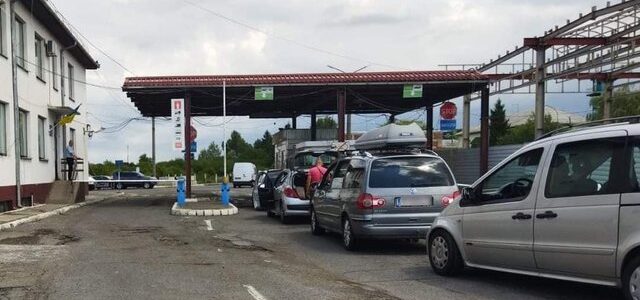
Passenger traffic across the Ukrainian border in the week of December 28-January 3 fell by 22.7% compared to the previous week, to 508,000. According to the State Border Guard Service’s Facebook post, this is primarily due to a sharp decline on the last day of the old year and the first day of the new, when the flow was only 42,000 and 26,000, respectively, while before Christmas it reached 133,000-136,000 people a day.
The number of exit crossings decreased from 325 thousand to 273 thousand, while the number of entry crossings dropped more dramatically – from 332 thousand to 235 thousand.
The number of vehicles crossing the checkpoints dropped from 117,000 to 93,000 over the week, while the flow of vehicles carrying humanitarian aid dropped from 471,000 to 418,000.
According to the State Border Guard Service, this Sunday, the largest number of vehicles leaving Ukraine on the border with Poland was observed at the Krakovets checkpoint – 50 cars and 25 buses, Ustyluh – 20 cars and Shehyni – 9 buses.
On the border with Hungary, the longest queue is at Luzhanka with 20 cars, while Tisa and Kosyno have 5 cars each, and on the border with Slovakia, 10 cars have accumulated at Uhorod.
The total number of people crossing the border during the New Year’s week is higher than last year’s: 251 thousand people left Ukraine and 224 thousand entered during the same seven days, with a traffic of 90 thousand cars. Last year, during this week, passenger traffic decreased by 18.4%, while the following week it increased by 6.7%.
As reported, on May 10, 2022, the outflow of refugees from Ukraine, which began with the outbreak of war, was replaced by an influx that lasted until September 23, 2022 and amounted to 409 thousand people. However, since the end of September, possibly under the influence of news about mobilization in Russia and “pseudo-referendums” in the occupied territories, and then massive shelling of energy infrastructure, the number of people leaving has been exceeding the number of people entering. It temporarily stopped in the second half of December and early January during the holidays, but then resumed again and reached a total of 223 thousand people from the end of September 2022 to the first anniversary of the full-scale war.
During the second year of the full-scale war, the number of border crossings out of Ukraine, according to the State Border Guard Service, exceeded the number of crossings in by 25 thousand, while since the beginning of the third year, the number of crossings in has increased by another 229 thousand.
As Deputy Economy Minister Serhiy Sobolev noted in early March 2023, the return of every 100,000 Ukrainians home results in a 0.5% increase in GDP. In its macroeconomic forecast for 2024, the Ministry of Economy has included the return of 1.5 million people to Ukraine.
At the same time, the National Bank, in its October inflation report, again downgraded its forecast for the outflow from Ukraine in 2024 from 0.4 million to 0.5 million. In absolute terms, the number of migrants staying abroad is expected to increase to 6.8 million in 2024.
According to updated UNHCR data, the number of Ukrainian refugees in Europe was estimated at 6.254 million as of December 16, 2024, and 6.814 million in the world as a whole, which is 28 thousand more than as of November 18.
In Ukraine itself, according to the latest UN data as of August 2024, there were 3.669 million internally displaced persons (IDPs), which is 121 thousand more than in April.